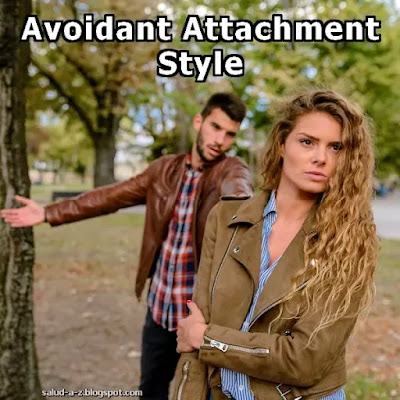Avoidant attachment style, a behavioral pattern in interpersonal relationships, involves individuals avoiding emotional intimacy and closeness. This attachment style can stem from various factors such as past experiences of abandonment, emotional neglect, trauma, or dysfunctional childhood relationships.
Potential causes of avoidant attachment style include
- Early experiences of insecure attachment: babies deprived of consistent care and attention may adopt avoidant attachment as an emotional defense mechanism.
- Parental influence: children may mimic avoidant attachment patterns if their parents struggle with emotional expression or exhibit similar behaviors.
- Trauma or abuse: experiences like emotional or physical abuse can prompt individuals to develop coping mechanisms centered around emotional distancing and intimacy avoidance.
- Dysfunctional family dynamics: constant conflicts, poor communication, or unhealthy relationships within families can lead children to develop avoidant attachment patterns as a means of emotional protection.
- Personality and temperament: some individuals naturally gravitate towards emotional distancing due to inherent personality traits. For instance, introverts may be predisposed to avoiding emotional intimacy more than extroverts.
It's crucial to recognize that avoidant attachment style isn't necessarily permanent and can evolve over time, especially with therapy or support aimed at addressing relationship patterns.
Addressing avoidant attachment style typically involves tackling the root causes of the avoidant behavioral pattern and fostering healthier relationship skills. Here are some common approaches to treating avoidant attachment.
Avoidant attachment style Treatment
- Individual Therapy: Psychological therapy, such as cognitive-behavioral therapy (CBT) or person-centered therapy, can assist in exploring and understanding past experiences contributing to avoidant attachment style. The therapist collaborates with the individual to identify and challenge unhealthy thought and behavior patterns, and develop strategies to manage emotions and relationships more effectively.
- Couples or family therapy: This therapy may be helpful when avoidant attachment style affects close relationships. This provides a safe space for each participant to explore their emotions, communication, and relationship dynamics. You can learn effective communication and conflict resolution skills and work towards building stronger, more secure connections.
- Mindfulness and Emotional Regulation Techniques: Training in mindfulness and emotional regulation techniques can help individuals with avoidant attachment style be more present in the moment, recognize and accept their emotions, and regulate them in a healthy manner. This can reduce the tendency to avoid emotionally challenging situations and foster greater openness to emotional intimacy.
- Exploration of Meaningful Relationships: Building secure and meaningful relationships can be an important part of treating avoidant attachment style. This may involve developing new friendships, engaging in social activities, and cautiously exploring romantic relationships with appropriate support.
- Attachment Education: Understanding how attachment works and how past experiences can influence current relationships can be enlightening and empowering. Learning about different attachment styles and their development can help individuals understand their own behavior patterns and take steps to change them.
Treating avoidant attachment style is a gradual process that may require time and effort. An integrated approach combining different therapeutic techniques and personal commitment to emotional growth may be more effective in addressing this behavioral pattern.

